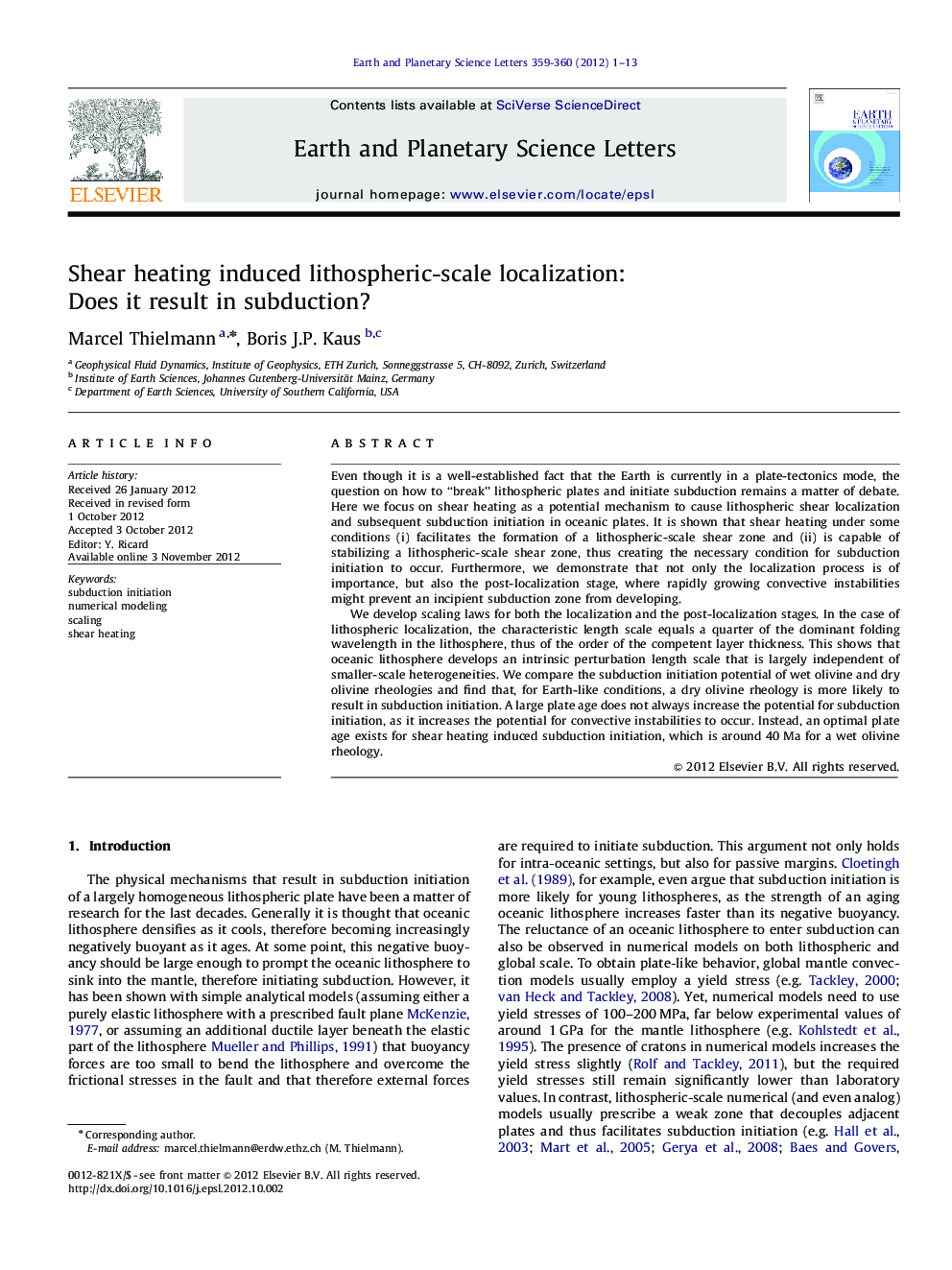| Article ID | Journal | Published Year | Pages | File Type |
|---|---|---|---|---|
| 6430376 | Earth and Planetary Science Letters | 2012 | 13 Pages |
Even though it is a well-established fact that the Earth is currently in a plate-tectonics mode, the question on how to “break” lithospheric plates and initiate subduction remains a matter of debate. Here we focus on shear heating as a potential mechanism to cause lithospheric shear localization and subsequent subduction initiation in oceanic plates. It is shown that shear heating under some conditions (i) facilitates the formation of a lithospheric-scale shear zone and (ii) is capable of stabilizing a lithospheric-scale shear zone, thus creating the necessary condition for subduction initiation to occur. Furthermore, we demonstrate that not only the localization process is of importance, but also the post-localization stage, where rapidly growing convective instabilities might prevent an incipient subduction zone from developing.We develop scaling laws for both the localization and the post-localization stages. In the case of lithospheric localization, the characteristic length scale equals a quarter of the dominant folding wavelength in the lithosphere, thus of the order of the competent layer thickness. This shows that oceanic lithosphere develops an intrinsic perturbation length scale that is largely independent of smaller-scale heterogeneities. We compare the subduction initiation potential of wet olivine and dry olivine rheologies and find that, for Earth-like conditions, a dry olivine rheology is more likely to result in subduction initiation. A large plate age does not always increase the potential for subduction initiation, as it increases the potential for convective instabilities to occur. Instead, an optimal plate age exists for shear heating induced subduction initiation, which is around 40Â Ma for a wet olivine rheology.
⺠Subduction initiation without a prescribed weak zone. ⺠Scaling law for shear heating induced localization linking it to oceanic folding. ⺠Scaling law for convective instability in a subduction context. ⺠Combination of the two scaling laws to predict the occurrence of subduction initiation. ⺠Scaling laws can predict 2D numerical model behavior.
